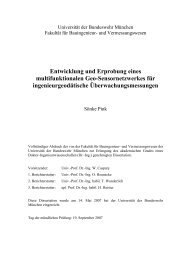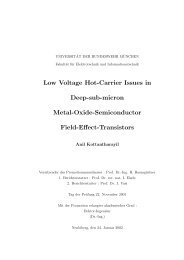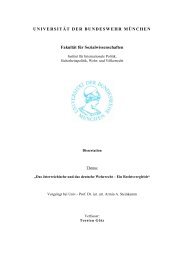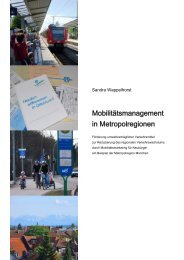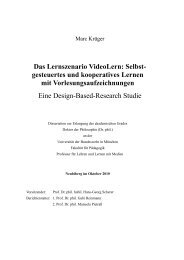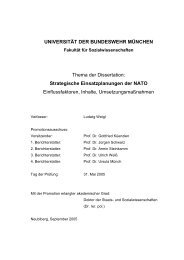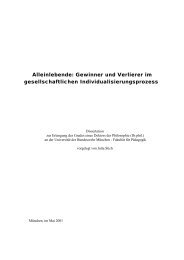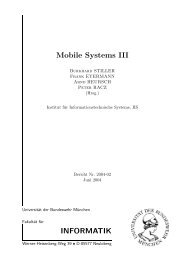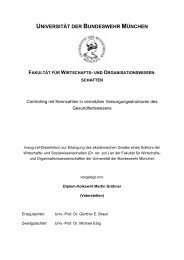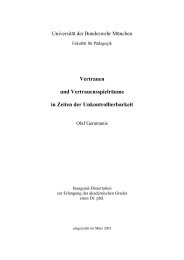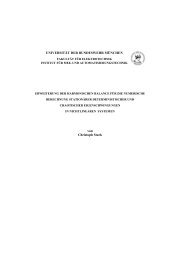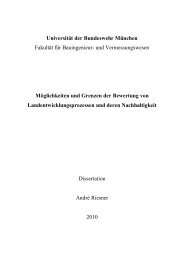Satellite Orbit and Ephemeris Determination using Inter Satellite Links
Satellite Orbit and Ephemeris Determination using Inter Satellite Links
Satellite Orbit and Ephemeris Determination using Inter Satellite Links
- No tags were found...
Create successful ePaper yourself
Turn your PDF publications into a flip-book with our unique Google optimized e-Paper software.
<strong>Inter</strong> <strong>Satellite</strong> <strong>Links</strong>References"cross-links" to disseminate the broadcast ephemeris of the entire constellation. Thisovercomes the problem that ephemeris upload can only be done by the master control station,which has rare contact (only twice a day) to each SV. This removes the necessity for the usercommunity to use orbit parameters computed already 24 hours ago, thus improving accuracy.GPS Block IIR has also the capability for autonomous navigation, i.e. observing <strong>and</strong>improving broadcast ephemeris parameters unaided from ground. The underlying TDMAprocess with a period of 37 seconds, however, does not support integrity with respect to thetime-to-alarm requirement.The effort of building complex space vehicles may be balanced by the reduction of (numberof) ground stations. Even if all monitoring <strong>and</strong> orbit determination is done on ground, theadditional orbit information obtained from the intersatellite ranging can bridge gaps in groundnetwork coverage.Moreover, the benign geometry especially for higher orbit altitudes like MEO or GEO/IGSOsatellites, allows very rapid estimation of the orbits <strong>using</strong> shorter intervals of observation.This leads to increased availability after manoeuvres, <strong>and</strong> also allows an increased rate ofbroadcast ephemeris update rate. The communication capability of ISLs can also be used tokeep error due to ageing of broadcast ephemeris low. Keeping the accuracy goal of Galileo inmind: this is an option to achieve it!Combination of onboard autonomous processing <strong>and</strong> intersatellite links, although not feasiblein an optimal filter, is the most interesting option for autonomous integrity monitoring of thefuture Galileo system. And last but not least: The two ephemeris models developed in theframe of this work are a perfect match for the need of the Galileo system in terms offlexibility <strong>and</strong> accuracy.8.3 AchievementsSoftware ConAn (Constellation Analyser)In the frame of this Ph.D. thesis, the theory of orbit determination <strong>and</strong> orbit computation hasbeen reviewed <strong>and</strong> a new approach for precise orbit <strong>and</strong> ephemeris determination <strong>using</strong> intersatellite links has been developed. To investigate the achievable accuracy, the elaboratedmodels have been coded in a complex software package allowing system level performanceanalysis as well as detailed evaluation of orbit computation <strong>and</strong> orbit estimation algorithms. Itincludes several gravity models, precise planetary ephemeris (JPL DE200, see [STA-90]) <strong>and</strong>orbit estimation in real time <strong>using</strong> Kalman filtering as well as conventional batch processingof measurements. The simulations, which are a cornerstone of this Ph.D. thesis have all beenconducted <strong>using</strong> ConAn, as well as the comparison <strong>and</strong> visualisation of results.Development of two new ephemeris modelsThe broadcast ephemeris model of both today's existing satellite navigation systems, GPS <strong>and</strong>GLONASS have been investigated. It has been shown that superior performance of the GPSmodel is mainly due to the number of parameters, or simply spoken, due to the degrees offreedom provided by the model. Especially for short periods of validity, i.e. much shorter thanR. Wolf Page 191



